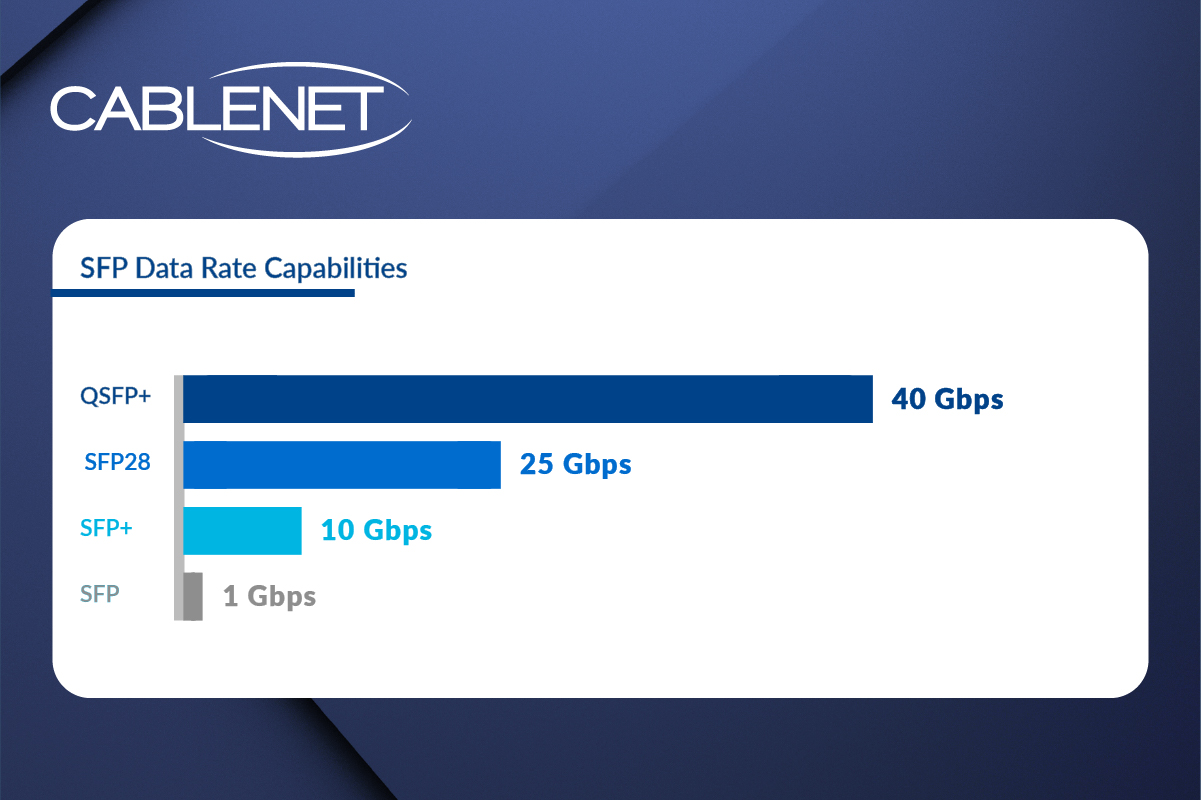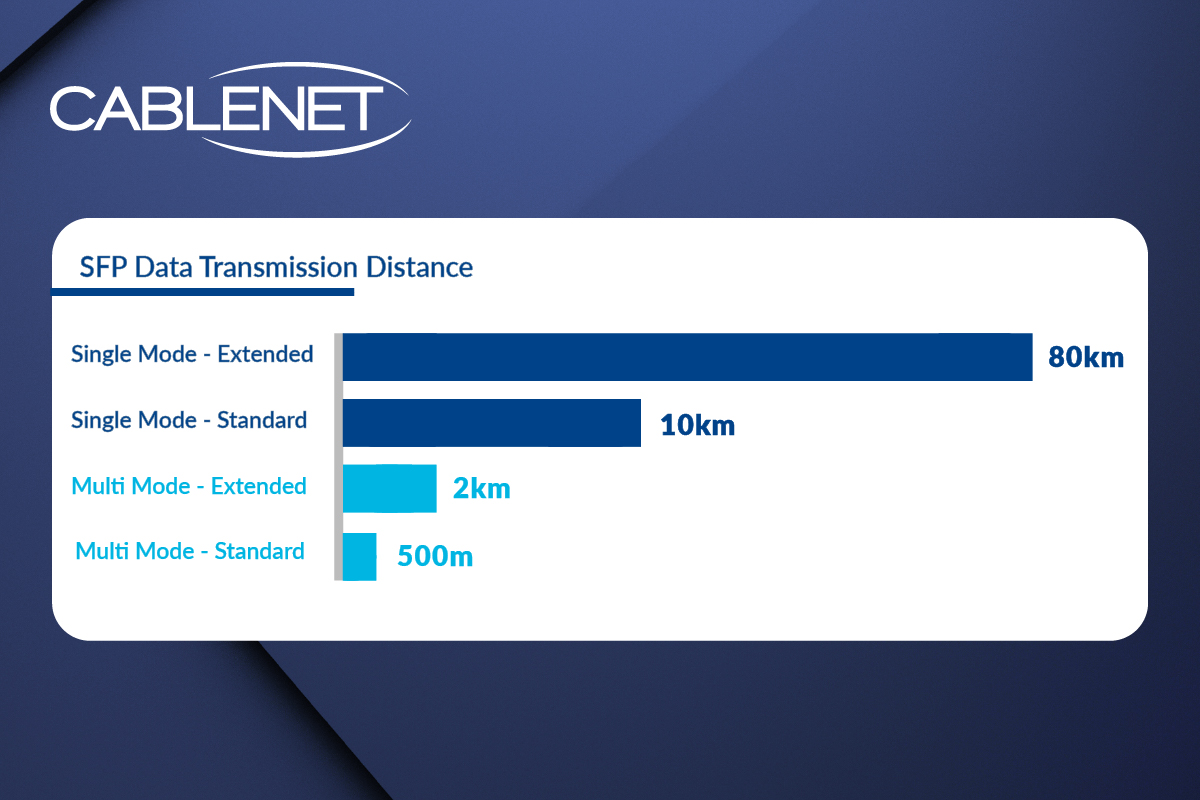Small Form-Factor Pluggables (SFPs)
Discover more about the different types of SFP available and some of their features.
What Are SFPs?
Small Form-Factor Pluggables, or SFPs, are compact, hot-swappable transceiver modules used in network and telecommunication equipment, such as servers, switches, and routers.
The form factor and electrical interface are outlined through a collaborative agreement known as a multi-source agreement (MSA), overseen by the Storage Networking Industry Association (SNIA). The SFP has superseded the bulkier gigabit interface converter (GBIC) in various applications and is occasionally called a "Mini-GBIC" by some manufacturers.
Connectivity can be achieved through optical fibre or a copper ethernet cable; your choice of connectivity will depend on the distance between devices.
Your choice of SFP will also depend on other factors, such as transmission distance, required speed, etc.

Listed Below Are The Common Types Of SFP
SFP:
This is the lowest level of transceiver and is called SFP. They are ideal for Fast Ethernet (100 Mbit/s) or Gigabit Ethernet (1000 Mbit/s) connections.SFP+:
An enhanced version of SFP, supporting 10 Gigabit Ethernet. They have identical dimensions to SFP transceivers.SFP28:
Further enhances SFP and SFP+, supporting 25Gbit/s, again having identical dimensions as SFP and SFP+.QSFP & QSFP+:
QSFP is an abbreviation of Quad Small Form-Factor Pluggable. One difference between these and the previously mentioned SFPs is their higher data rates, ranging from 4G to 400G.
Another key difference is their size; QSFP & QSFP+ are larger than SFPs and will not fit into the same slot.
SFP Connectivity, Fibre Types & Monitoring
RJ45, LC, or MTP/MPO
SFPs can be supplied with different connection interfaces. In general, SFP, SFP+, and SFP28 modules will use either an LC for optical fibre connectivity or RJ45 for copper connectivity, whereas QSFP & QSFP+ are available with LC or MTP/MPO connections.
Singlemode Vs Multimode
Singlemode transceivers are referred to as long-reach, meaning they are used to connect devices over a much greater distance than multimode transceivers, and depending on the configuration, this distance can be as much as 200km.
Multimode transceivers can be called 'short reach' as they are generally used to connect switches within a rack, comms room or the same building. Depending on the configuration, multimode transceivers can cover up to a couple of kilometres.
Digital Optical Monitoring
Digital Optical Monitoring, or DOM, allows you to monitor various variables such as power, temperature and supply voltage. This means that if a transceiver is failing, it is easy to identify. DOM is available on most transceivers.

